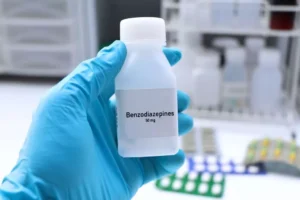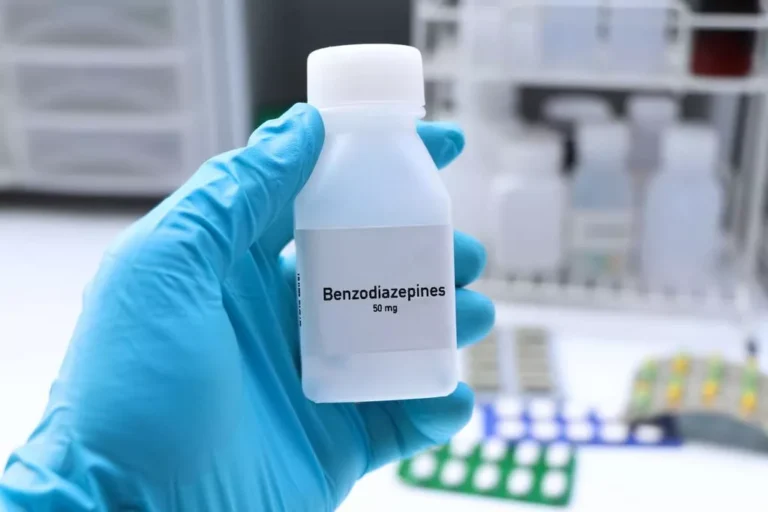
Tabakoff et al. 122 compared the mRNA expression profiles of mouse strains displaying marked differences in acute tolerance to alcohol and results from this study indicate the importance of a signal transduction cascade that involves the glutamatergic pathway. One study used a staged meta-analysis to explore comorbid alcoholand nicotine dependence and detected genome-wide evidence of association withSNPs spanning a region on chromosome 5 that includes both IPO11(importin 11) and HTR1A (5-hydroxytryptamine (serotonin)receptor 1A, G protein-coupled)78. The distribution of ADH1B and ALDH2 coding variants differs greatly among different populations; for both genes, genetic disposition to alcoholism the protective alleles most commonly are found in people of East Asian origin (for more information, see the article by Eng et al. in this issue). For example, ADH4 variants strongly affect alcoholism risk in populations of European descent (Edenberg et al. 2006). Furthermore, noncoding variations in various alcohol-metabolizing enzymes likely also affect risk for alcoholism (Edenberg et al. 2006). One direction for future research is to identify specific genes that contribute to the development of alcoholism.
Targeting Environmental Factors
Such isolated populations, and large families within them, are likely to confer the advantage of reduced genetic heterogeneity. A non-exhaustive list of convergent findings across studies includes a region on chromosome 4q, that contains the alcohol dehydrogenase (ADH) gene cluster 96,97,99,100, and a chromosome 4p region near the centromere containing a γ-aminobutyric acid receptor (GABAA) gene cluster 96,99. In the COGA sample there was also evidence for linkage to chromosomes 1 and 7, and to chromosome 2 at the location of an opioid receptor gene 96. A region on chromosome 1 was linked to alcoholism and affective disorder in the COGA data set 102, supporting further the existence of a genetic overlap between alcoholism and internalizing disorders. Since then, there have been significant advances in techniques available for mapping genes and as a result considerable changes in outlook have occurred. It is now generally accepted that genetic risk for alcoholism is likely to be due to common variants in numerous genes, each of small effect, however rare variants with large effects might also play a role.

Am I at Risk of Becoming Addicted to Alcohol?
- Other important mechanisms that are likely to underlie G × E interactions include hormonal effects.
- Variations in the ALDH gene directly affect the rate at which acetaldehyde is eliminated from the body after alcohol consumption.
- Further research is needed to explore the precise mechanisms through which ALDH gene variants influence alcohol metabolism and addiction risk.
- For example, amygdala activation after exposure to stressful stimuli predicts anxiety and captures inter-individual differences in emotional response and stress resiliency 33.
- All participants responded to questionnaires (e.g., personality) and the Semi‐Structured Assessment for the Genetics of Alcoholism (SSAGA) which gathers information on psychiatric diagnoses, conditions and related behaviors (e.g., parental monitoring).
Understanding the role of the GABA receptor gene in alcoholism is crucial for identifying individuals at risk and developing targeted interventions. Further research is needed to unravel the intricacies of the genetic factors involved in alcohol addiction and to develop effective prevention and treatment strategies. Research has shown that individuals with a family history of alcoholism are at a higher risk of developing the disorder themselves. It is responsible for feelings of pleasure and reward, and is released in response to certain stimuli, such as food, sex, and drugs. Studies have shown that individuals with a genetic predisposition to alcoholism have abnormalities in their dopamine system, which may contribute to their increased risk of developing an addiction. One of the key factors in understanding the genetic predisposition to alcoholism is family history.
The genetic basis of alcoholism: multiple phenotypes, many genes, complex networks
- Accumulation of acetaldehyde is responsible for the physiological malaise commonly known as ‘hangover’.
- By targeting these genes, scientists can potentially alter the way the brain responds to alcohol, reducing the pleasurable effects of drinking and decreasing the risk of addiction.
- From its inception, COGA has focused on the importance of brain function and on developing novel brain intermediary phenotypes of risk for and consequences of alcohol use and AUD.
- As a result, it is now recognized that genetic risk for alcoholism is likely to be due to common variants in very many genes, each of small effect, although rare variants with large effects might also play a role.
- Unfortunately, there is some confusion in the literature from some groups using nonstandard nomenclature.
Studies arerevealing other genes in which variants impact risk for alcoholism or relatedtraits, including GABRA2, CHRM2,KCNJ6, and AUTS2. As larger samples areassembled and more variants analyzed, a much fuller picture of the many genesand pathways that impact risk will be discovered. Alcoholism is a complex disease Substance abuse that involves a combination of genetic and environmental factors.

Genes alone cannot determine if someone will become an alcoholic, as environmental factors also play a significant role. Identifying individuals who are at a higher genetic risk and offering targeted interventions at an early stage can help prevent the onset of addiction. This could involve increased screening and assessment for individuals with a family history of alcoholism, as well as providing resources and support for at-risk individuals. One potential method of gene therapy for alcoholism involves targeting genes that are involved in alcohol metabolism. By modifying these genes, scientists aim to enhance an individual’s ability to break down and eliminate alcohol from their system.
Direct Sequencing of Rare Variants

In humans, MPDZ does not demonstrate an association with alcohol-induced withdrawal seizures, but haplotype and single-SNP association analyses suggest a possible association with alcohol dependence 74 and alcohol consumption 65. Another QTL on chromosome 1 was mapped to a 0.44 Mb interval containing 15 candidate genes, including Kcnj9. Kcnj9 encodes GIRK3, a subunit member of a family of G-protein-dependent inwardly rectifying K+ channels that mediate postsynaptic inhibitory effects of Gi/o-coupled receptors 75. There are several other genes that have been shown to contribute to the riskof alcohol dependence as well as key endophenotypes. In most cases, studiesrecruited families having multiple members with alcohol dependence; such familiesare likely to segregate variants that affect the risk of alcohol dependence.

- Genetic counseling is a valuable resource for individuals who are at risk of developing alcoholism due to their genetic predisposition.
- Multiple and complementary approaches will be required to piece together the mosaic of causation.
- A subsequent COGA scan found strong linkage of resting EEG beta power, an intermediate phenotype for alcoholism, to the same chromosome 4 region 43.
- Additionally, gene therapy is a complex and expensive treatment that may not be accessible to all individuals suffering from alcoholism.
The Diagnostic and Statistical Manual of Mental Disorders, 5th edition, text revision (DSM-5-TR), a clinical diagnostic guidebook, indicates that AUD often runs in families at a rate of 3–4 times higher compared with the general population. Many factors are involved in the development of AUD, but having a relative, or relatives, living with AUD may account for almost one-half of your individual risk. Note that the official names of several ADH genes have been changed, and theliterature has been confused by some groups using non-standard names for some ofthe genes29. Every person carries two copies of every gene, one inherited from the mother and one inherited https://ecosoberhouse.com/ from the father. In recent years, the nomenclature for these genes was revised and standardized by the Human Genome Organization (HUGO). Unfortunately, there is some confusion in the literature from some groups using nonstandard nomenclature.
